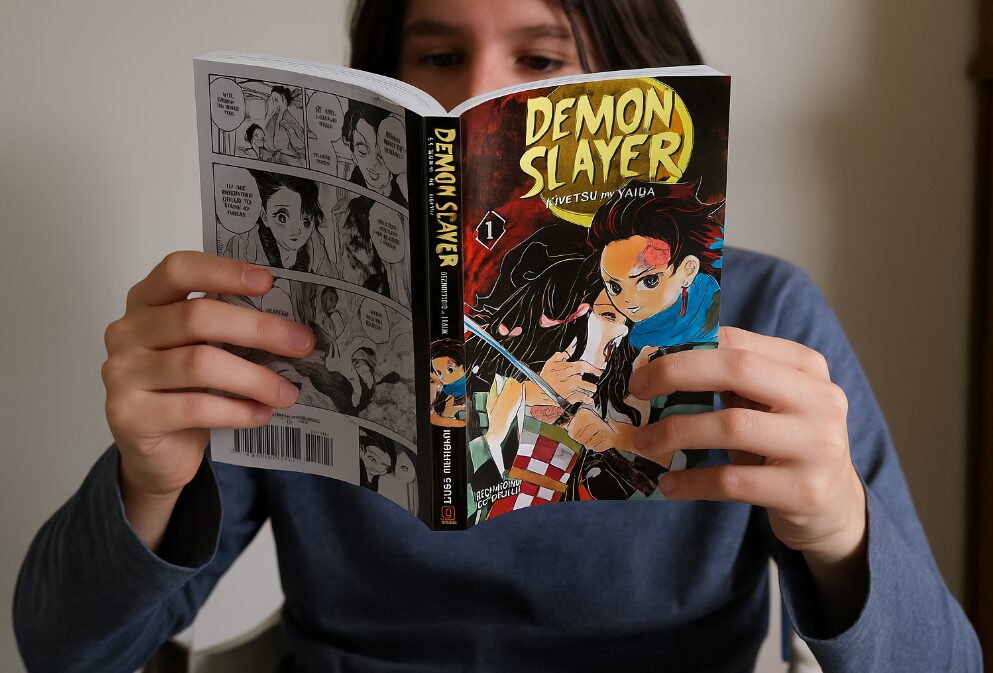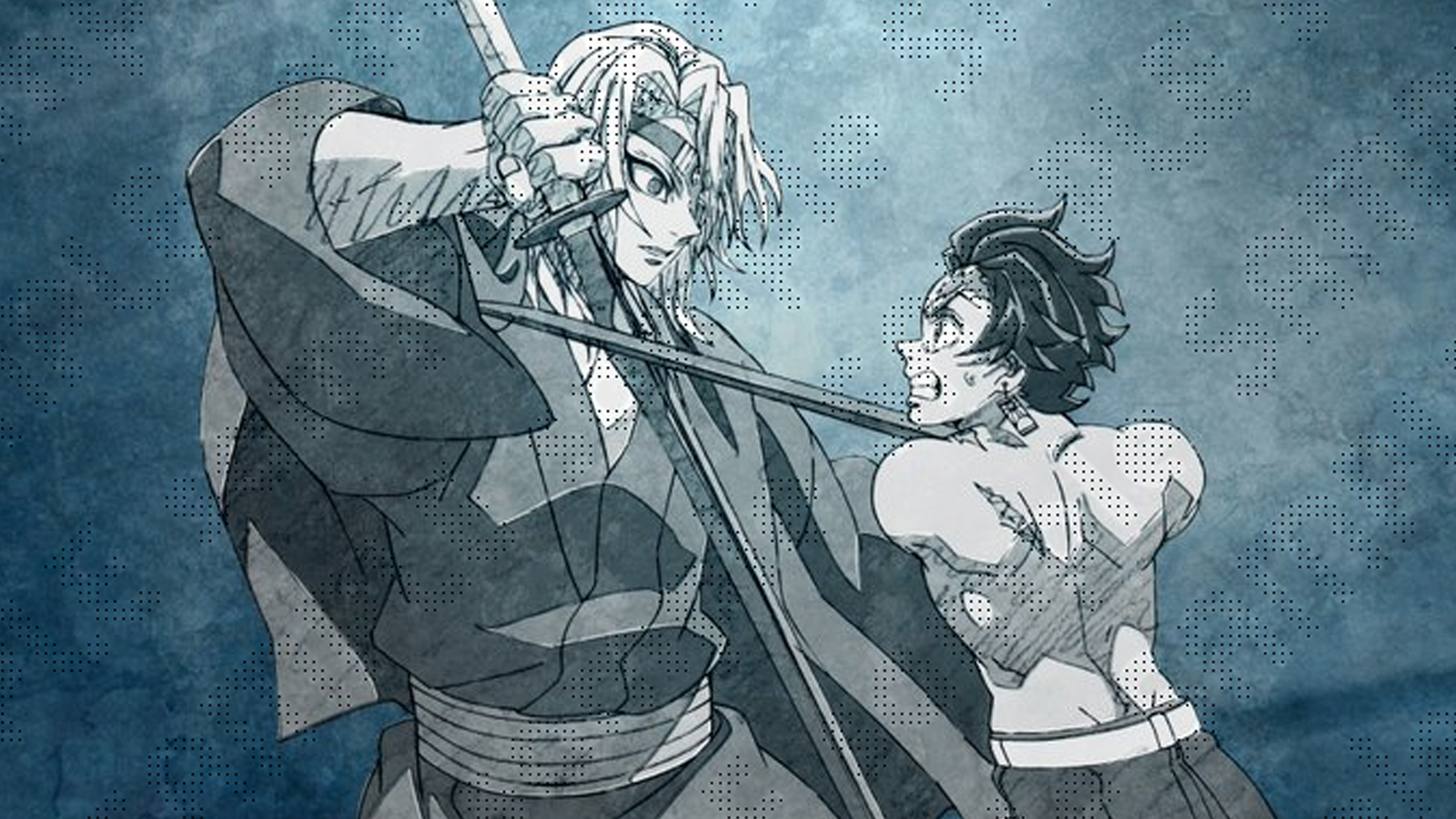On the surface, Demon Slayer: Kimetsu no Yaiba may look like just another action-packed anime and manga series. But beneath the sword fights and breathtaking animation lies a deeply human story one of grief, survival, and unwavering love between siblings. This is the kind of tale that doesn’t just entertain it resonates. It stirs emotions, provokes questions, and stays with you long after the final scene. For those wondering what Demon Slayer is really about, or why it’s struck such a chord with millions around the world, it’s time to peel back the layers. In this article, we’re diving into the real story behind Demon Slayer, exploring its themes, characters, symbolism, and what makes it one of the most meaningful pieces of storytelling to come out of Japan in recent years. Whether you’re a new reader or a long-time fan, you’ll walk away with a richer understanding of this cultural juggernaut.

The journey of Demon Slayer starts with a single, harrowing event but the true emotional foundation goes much deeper. Set during the Taisho era in Japan (early 20th century), the manga follows Tanjiro Kamado, a humble, kind-hearted boy who sells charcoal to support his family in the mountains. One day, returning from the village, Tanjiro finds his entire family slaughtered by demons. The only survivor his younger sister Nezuko has been turned into a demon herself. But rather than giving in to hatred or despair, Tanjiro makes a vow: not only will he avenge his family, but he will also find a cure for Nezuko and turn her human again.
That’s where the real story begin —not with revenge, but with hope and loyalty. Tanjiro joins the secretive Demon Slayer Corps, an underground organisation that’s been fighting demons for generations. He learns to harness his breath and blade through brutal training, all the while holding onto his humanity in a world that has lost much of its own. What sets Demon Slayer apart is its emotional realism. It’s not just about good versus evil it’s about loss, family, trauma, and perseverance. Every battle Tanjiro faces is not just physical, but moral. He often hesitates before delivering the final blow, offering compassion even to those who’ve done horrific things. This layer of depth adds complexity to what might otherwise be just another fantasy story. For fans in Australia and around the world, it’s that blend of brutal action and touching vulnerability that has made Demon Slayer so unforgettable. If you’re already immersed in the fandom, or looking to begin your collection, have a look at these stunning Demon Slayer figures available across Australia.
To fully understand the world of Demon Slayer, it’s essential to look at the traditional Japanese folklore and cultural beliefs that inspired it. The idea of humans transforming into demons isn’t just fantasy it’s rooted in centuries of spiritual stories involving oni (demons), yokai (supernatural beings), and karma. Each demon in the series has a personal backstory, often linked to their human life before becoming a monster. These stories usually revolve around betrayal, illness, abuse, or loneliness very real, very human struggles. This makes the demons feel less like villains and more like tragic figures consumed by pain and resentment.
Author Koyoharu Gotouge uses this dynamic to blur the lines between right and wrong. It’s a world where monsters cry, and humans become cruel. Tanjiro’s empathy his ability to see through rage and into the heart of suffering is what gives the manga its soul. But it’s not just the demons who draw from tradition. The fighting techniques in Demon Slayer are based on real-world Japanese breathing styles and swordsmanship. Each Breathing Style (like Water Breathing, Flame Breathing, etc.) is a symbolic representation of inner discipline, focus, and balance key principles in Japanese martial arts and Zen philosophy. The artwork reflects this, with each combat sequence illustrated like a flowing calligraphy more poetry than punch. The visuals are both intense and elegant, reflecting the spiritual nature of the fights. For collectors and anime enthusiasts, the rise of Demon Slayer has boosted interest in the broader world of anime figures and Japanese pop culture throughout Australia.
Demon Slayer thrives not only on its story or animation, but on its unforgettable cast of characters. Each of them is crafted with layers of complexity that go far beyond typical anime archetypes. These aren’t just heroes and villains they’re people shaped by trauma, love, and loss. At the centre is Tanjiro Kamado, whose defining trait is his unwavering compassion. While many protagonists are driven by rage or ambition, Tanjiro is fuelled by a deep desire to protect, heal, and understand. His empathy is his strength. Even when facing off against a vicious demon, he pauses to consider what kind of pain that creature must have endured.
His sister Nezuko, though transformed into a demon, retains her human emotions. She’s a living metaphor for the battle between one’s inner darkness and the will to stay connected to what’s good. Nezuko doesn’t speak much, yet her presence in every scene is powerful her journey is one of restraint, loyalty, and identity. Then there’s Zenitsu Agatsuma and Inosuke Hashibira, Tanjiro’s unlikely companions. Zenitsu, a coward by nature, reveals tremendous courage in key moments, showcasing how bravery isn’t about fearlessness but action despite fear. Inosuke, raised by boars in the wilderness, is wild and impulsive, but over time shows growth, vulnerability, and surprising emotional depth.
Beyond the central team lies the elite group known as the Hashira the most powerful Demon Slayers. Each one brings a unique combat style, personality, and backstory. From the fierce Flame Hashira Kyojuro Rengoku, who believes in dying with purpose, to the gentle yet deadly Mist Hashira Muichiro Tokito, whose memory is clouded by past trauma, the Hashira are more than just boss-level allies. They’re a deep reflection of the manga’s core themes: honour, sacrifice, and legacy.
And let’s not forget the demons themselves. Far from being simple enemies, each demon in the series is a character in their own right with tragic pasts, motivations, and even regrets. The primary antagonist, Muzan Kibutsuji, is terrifying not just because of his power, but because of his desperation. Obsessed with perfection and immortality, Muzan represents the fear of death taken to a monstrous extreme. What makes this storytelling so impactful is that every fight is personal. Every victory is earned, and every loss hurts. It’s this emotional richness that keeps readers and viewers invested not just in who wins, but in what it costs.
Throughout its relatively short run, Demon Slayer manages to pack in several unforgettable story arcs that have each left a lasting impression. Unlike many long-running shōnen series, this manga respects its pacing. Each arc is focused, intense, and emotionally resonant never bloated. Here are some of the most defining chapters in the story:
- The Mount Natagumo Arc – A horrifying battle against spider demons that tests Tanjiro’s strength and exposes the cruelty behind the demons’ creation.
- The Mugen Train Arc – Perhaps the most emotionally devastating arc, where heroism meets tragedy, and where Flame Hashira Rengoku earns his place as a legend.
- The Entertainment District Arc – A vibrant yet deadly setting where the team faces off against upper-rank demons and learns what it really means to risk everything.
- The Swordsmith Village Arc – A turning point for character growth and revelations, offering quieter moments before building into intense confrontations.
- The Infinity Castle and Final Battle Arc – The climactic endgame where every character’s fate is decided. No one walks away unchanged.
Each arc contributes something unique to the overall story. Whether it’s a new emotional layer, a deepened character arc, or a symbolic revelation, these moments are what define Demon Slayer’s legacy. Importantly, these arcs are designed not just to entertain, but to challenge the reader’s understanding of strength, morality, and what it means to be human. In the span of a single volume, you might find yourself cheering, crying, and reflecting on your own values.
In a world where countless anime and manga titles are released every year, Demon Slayer stood out almost immediately not because it reinvented the genre, but because it perfected its formula with unmatched emotional clarity and visual storytelling. At the heart of its appeal is relatability. The themes of loss, family, perseverance, and identity transcend cultural barriers. Whether you’re in Tokyo, Sydney, or anywhere else, the emotions hit the same. Here’s why it connected so deeply with audiences across the globe, including in Australia:
- Authentic emotional storytelling
- Beautiful, hand-crafted animation (in the anime)
- Memorable, multidimensional characters
- Respectful blending of tradition and modernity
- A contained, complete narrative arc
Demon Slayer didn’t overstay its welcome. It delivered a beginning, middle, and end tight, deliberate, and powerful. That alone makes it stand out in a market full of ongoing, never-ending sagas. In Australia especially, the manga has become a gateway for new readers and collectors, many of whom were introduced to the anime during lockdowns. The rise in local manga shops and figure retailers is no coincidence Demon Slayer sparked new interest in the medium for a whole generation.
